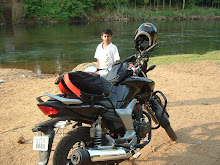
Best Practices: Recreating the HR function delivered on 14th October, 2005 at Hotel Renaissance Kochi.
At the outset it may be well worth remembering and reminding oneself about the Change from process oriented HRM to transformation oriented strategic HRM which everyone of us HR professionals is aware of.
Jeffrey Mello defines Strategic HRM as involving the development of a consistent aligned collection of practices programmes and policies to facilitate the achievement of the organisation’s strategic objectives. The changes that we mentioned earlier have the following implications. In general HR has moved from predictability oriented bureaucratic control to organic free flowing control, from specialisation to broader job design, from independent to interdependent tasks, from command and control to more autonomous modes, from people as costs to people as investments and from reactive to proactive approach.
Contingency approach posits that the HR practices must be consistent with the other aspects of the organization and demands ‘Fit’ or ‘congruence’. This is the most prevalent interpretation of Strategic HRM. This approach assumes a more or less static external system
In sharp contrast the configurational approach emphasizes fit with other systems within the organisation and fit with external characteristics.
Contrarian views
Thus the static best practices list needs to be extended to new and powerful ideas that open possibilities, stretch imagination and inspire change. Most useful ideas come from companies that faced a critical business problem and were forced to find a solution. The Message is that the Best practice is not the monopoly. Each one finds a unique way.
Supposing the Idea embraced by an innovative HR practice be : Client self sufficiency as the ultimate goal for Human Resource Management. The old Method would be when an employee needed to complete an HR transaction, the preferred sequence would be Person-Phone-desktop model where by force of habit the employee approaches the HR service provider first and the phone and self access are second and third priorities.
HR can develop in newer directions in the following ways:
· Redefining the mission, role and structure of HR in the direction of making people a source of competitive advantage.
· Reducing the cost and increasing the value of HR support by asking outsourcing, automating and centralising questions.
· Identifying high impact people-management practices by stopping wasteful practices, prioritising practices to those having high impact.
· Re-engineering HR Processes in a way that enhances the creative use of people away from mere transactional roles.
· Using technology to streamline and automate administrative HR tasks by more interfaces with the IT department.
· Eliminating non essential, low value adding work. Often the truth is the HR dept. is adept at non critical areas.
· Building Management Accountability for implementing Effective People practices such as accountability for the training managers for end results rather than mere feel good responses to training, learning or behavioural change alone.
· Developing HR staff capabilities and skills such as more business savvy and consultative skills
· Redefining the Employment contract in an environment where employment security is out, continuous training is in and trainability being crucial from the recruitment stage itself.
· Quantifying the return on investment of HR initiatives. In which case the Linkage would be people– practices– business results under the general axiom that “If your employees are happy they will make the customers happy; happy customers in turn drives your competitive advantage.”
· Creating strong partnerships with line operations where HR must know the business to gain credibility with the line.
Thank you





















No comments:
Post a Comment